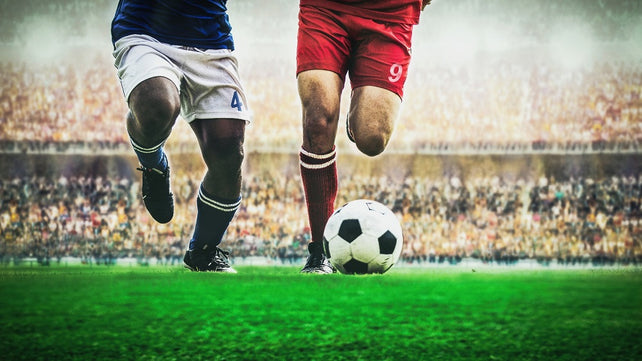U.S. Soccer Numbers Explained
Mar 25, 2020
Soccer is a highly tactical game and, if you want to have a successful team, every player has to play their part. That means knowing their assigned role on the field and slotting into the right position as needed.
The terminology around player positions can sometimes be confusing, especially since soccer is a world game. There are a few different names for every position, sometimes dependent on which formation is used—and that’s without mentioning all the different languages!
An easier way to explain positioning and tactics is with a universal numbering system that corresponds with the player’s role on the pitch, regardless of whether it’s for outdoor or indoor soccer. Widely adopted by coaches, leagues, and commentators in the U.S. and across the world, you’ll need to know these numbers if you want to get serious with the game!
Here’s how they work, what the roles are commonly called, and what’s expected of the position.
Defense Position Numbers
- 1 – Goalkeeper – A good goalkeeper can turn the tide of a match with a timely save or long pass. Apart from fast reflexes and athletic ability, goalkeepers are expected to have a powerful, accurate kick for effective ball clearance.
- 2 & 3 – Right & Left Fullback / Outside Back – Roaming close to the sidelines, the outside backs should be in a position to shut down wide plays from the opponents and transition into an offensive surge. High stamina and endurance are required.
- 4 & 5 – Center Back – Usually the last line of defense for your team, center backs (or full backs) will need to be tirelessly alert, skilled at clean tackles, and capable of quickly anticipating and responding to offensive opposition pushes.
Offense Position Numbers
- 9 – Striker / Center Forward – Strikers have one aim: to convert passing plays into a goal. That means they’ll need to be good with their heads and their feet and quick enough to turn the defenders inside out. They’ll also need to be in the right place at the right time to receive passes.
- 10 – Second Striker / Center Forward – In some formations, both 9 and 10 will be center forwards capable of outwitting opponents and scoring. If there is a main striker used, however, the number 10 role will serve as a second striker, looking to make plays and provide a fast, accurate feed to the main goal scorer.
Midfield Position Numbers

- 6 – Defensive Midfielder – Somewhat interchangeable with the center backs, the defensive midfielder should be looking to cut off passes and shut down the opponent’s offensive corridor. A good defensive midfielder should also be a strong and fast passer, in order to get the ball forward quickly when necessary.
- 8 – Central Midfielder – The unsung hero of the team, central midfielders are integral in practically every play on the field, from offense to defense. They’ll need excellent skills in both long- and touch-passing, tackling, ball-handling, and general tactics—along with plenty of stamina, too!
- 7 & 11 – Right & Left Midfielder / Winger – Placed mostly toward the side of the field, wingers must be highly versatile. At times they’ll be drawing the opposition defense out with short passes and skilled one-on-one play and, at other times, they’ll be the playmakers themselves, surging forward for a cross-shot on goal. Excellent long- and short-range kicking skills are essential.
Ready to be a key player on your soccer team? With virtual soccer drills, skill coaching, fun games, and precision feedback, our indoor soccer simulator makes training for specific roles easy. To find out how our home soccer simulator can help you perform at your best, contact us today!




































